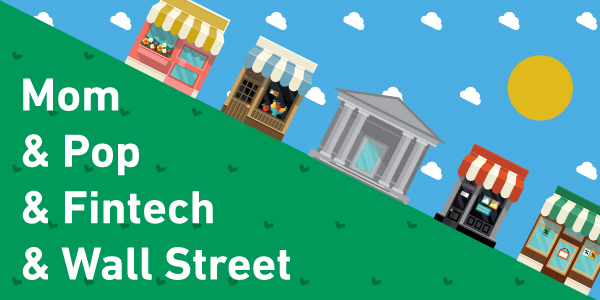
This year’s Marketplace Lending and Investing Conference explored issues of transparency, partnership, consistency and sustainability. There was healthy debate on each of these topics and the audience, presenters and panelists frequently returned to the theme of the relationship between Marketplace Lenders, Fintech, Banks and Investors. As the conference unfolded I thought about the role of small businesses in the relationship between these stakeholders. How do mom and pop small businesses fit into these complex, rapidly evolving relationships?
In mid-2015 The Federal Reserve of Cleveland published a report. The title was “Alternative Lending Through The Eyes of ‘Mom & Pop’ Small-Business Owners: Findings from Online Focus Groups”. The report found that the small business owners participating in the online focus groups had a number of common concerns:
- Marketplace Lenders’ sites are attractive … but how secure? How private is the information the small business provides?
- It is difficult to compare product offerings, features and pricing
- The small business owners bank is a source of advice but is not necessarily considered as an option for funding
There are some clear parallels with the conference’s focus on transparency, partnership and sustainability. See if any of these sound familiar:
- Regulators at the federal and state level are researching the Marketplace Lending industry and exploring ways and means of regulating the space. They are particularly focusing on issues of disclosure, fairness, privacy and governance. The CFPB – Consumer Financial Protection Bureau has been particularly active. There are two recent examples that illustrate increasing protection for small businesses. Dwolla was hit with a $100,000 fine in March of 2016, directly related to data security practices. Then, in late September LendUp was fined $3.5 million for deceiving its customers. The list of lenders who have strayed from fair and transparent business practices is long and growing. Fortunately, regulatory supervision of the online marketplace is here to stay.
- Banks largely abandoned the small business segment post 2008. Lack of profitability is most often cited as the reason for the exodus. Marketplace Lenders entered the space, delivered a wide range of product offerings, high levels of responsiveness and a relatively painless customer experience. Now, eight years later, banks and Marketplace Lenders are partnering to make the most of their relative strengths – deep customer relationships and the capability to deliver exceptional customer choice and experience, through technology.
Leaders in the various stakeholder organizations are still focused on surviving, meeting goals for growth, managing risk and optimizing returns. In the past these may have conflicted with the small business owners interests. In late 2016, they are in alignment … and that is good news for small business owners throughout the US economy.
If you would like to hear more of what I learned at Marketplace Lending and Investing, check out the Live Marketplace Lending & Investing Q&A I recorded from the conference.
